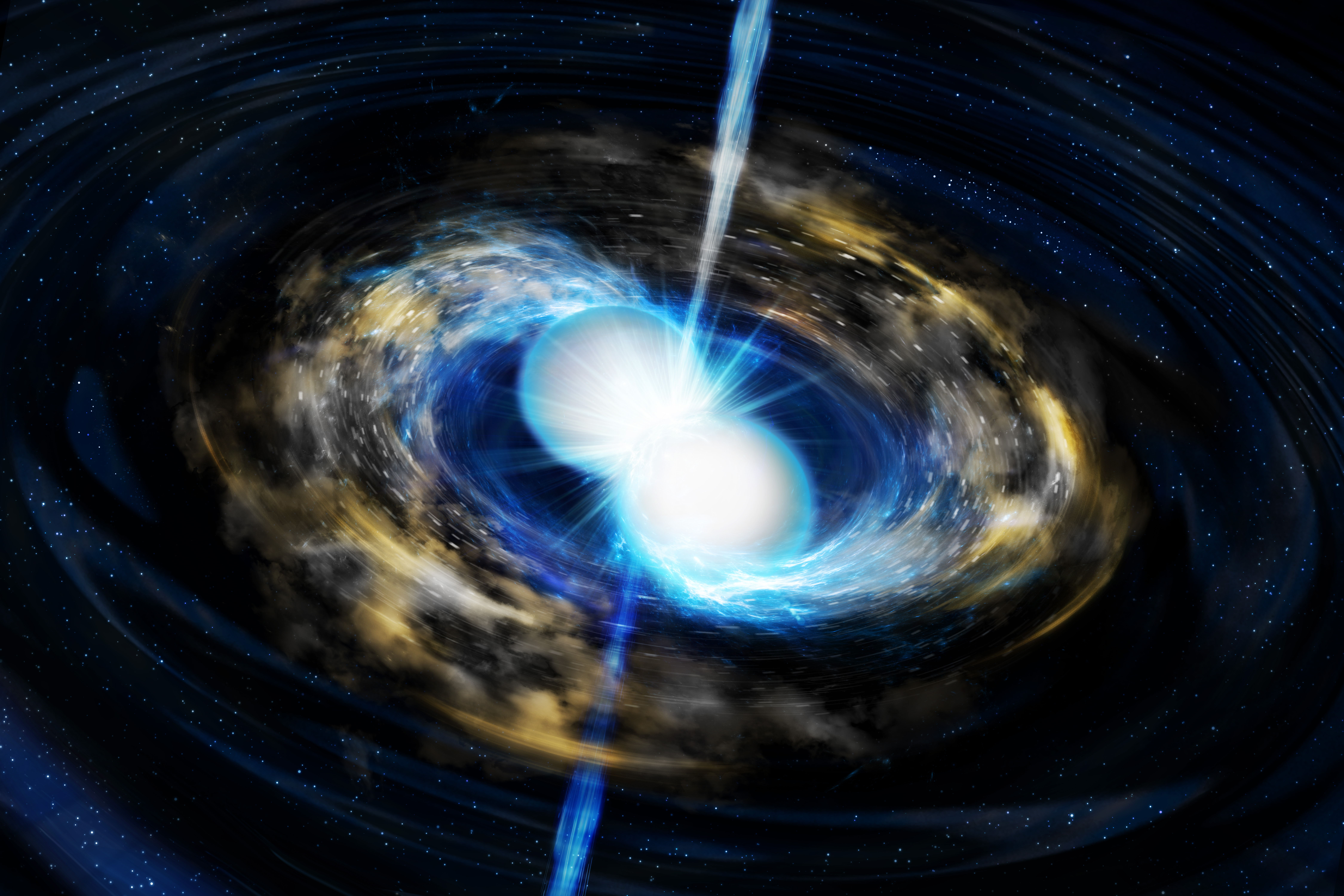Research
I am interested in the origin of elements in the universe, and focus on binary neutron star mergers as the origin of heavy elements.
Related to that, I am also interested in high energy phenomena as supernovae and stellar spectroscopic observations.
Origin of elements in the universe
All things in the universe are made of "elements", which have been produced somewhere in the universe. However, the origin of all elements is not yet fully understood; no one has clear answer for the origin of elements heavier than iron, e.g., gold, platinum, and lanthanides. Although it has been known that such elements are produced by rapid neutron capture nucleosynthesis (r-process), the site where it occurs has kept debated for decades.
Binary neutron star mergers/Kilonovae
Neutron stars are ultra-dense objects made of neutrons. They are formed when massive stars die. It is known that two neutron stars sometimes form binary, and if such a case, they finally merge losing energy due to the gravitational waves. Such explosive merger ejects neutron-rich material, and thus, is considered to be a promising site to produce elements by rapid neutron capture nucleosynthesis (r-process).
Radioactive decay of freshly synthesized r-process nuclei heats the ejected material and gives rise to thermal emission in optical to infrared called a "kilonova". In other words, we can obtain information on the elements synthesized in neutron star mergers by observing kilonovae. The elemental information is also important for estimating the properties of the ejecta, becasue the species and amounts of elements synthesized in neutron star mergers depend on the physical conditions such as the temperature and density of the ejecta. Therefore, by observing kilonovae and extracting information of elements from light curves and spectra, it is expected to lead to understanding of the origin of heavy elements as well as the physics of neutron star mergers.
My current research focuses on kilonova spectra, mainly using radiative transfer simulations, to find out how to extract information on individual elements from kilonovae.

Artist’s conception of a neutron star merger and kilonova. ©Tohoku University